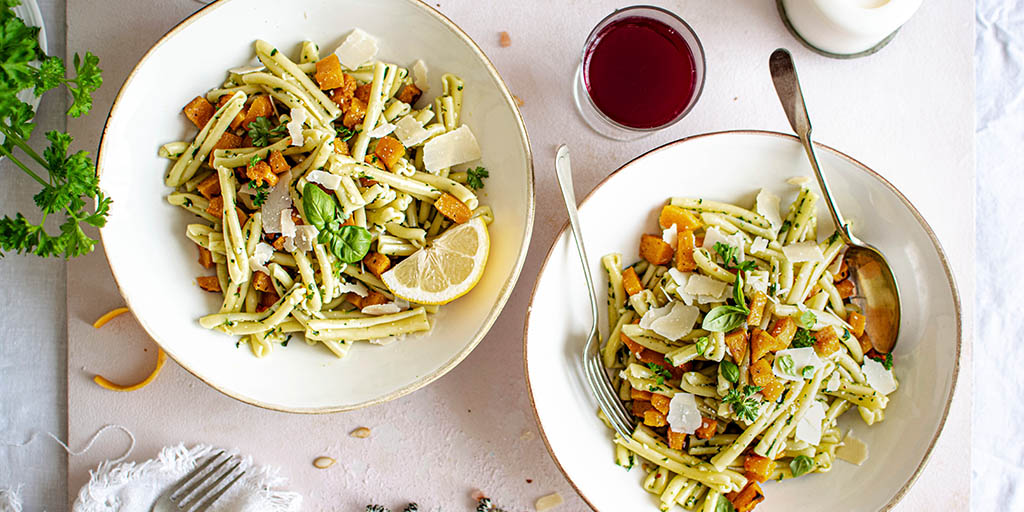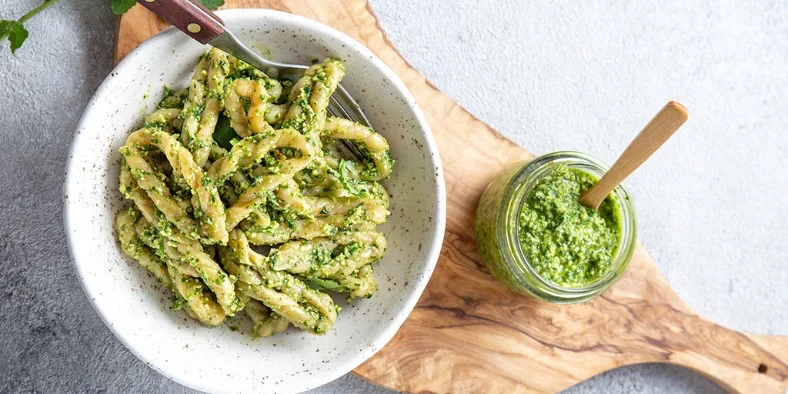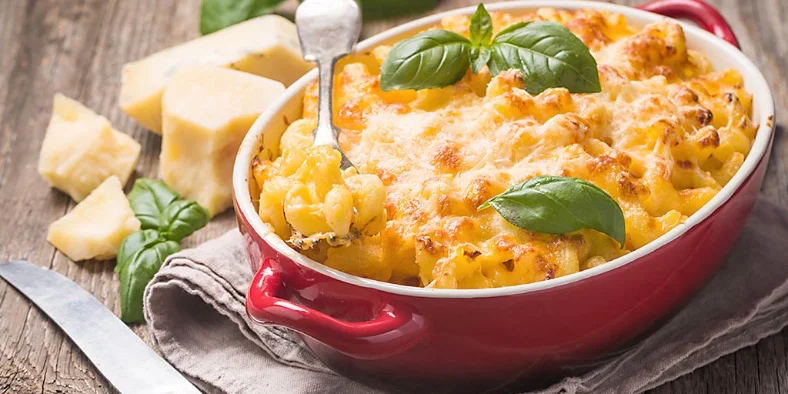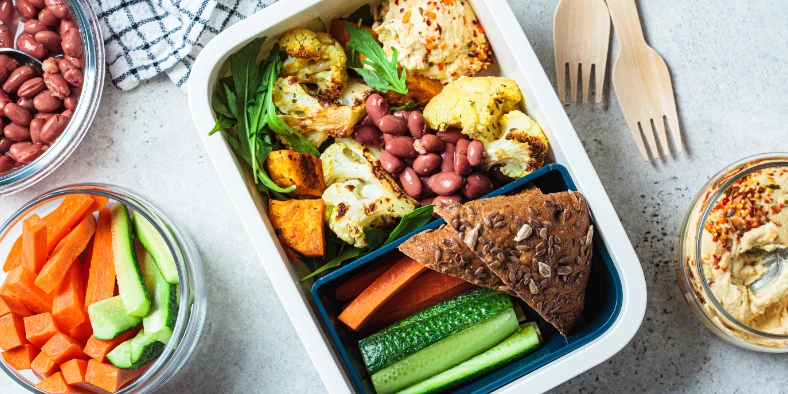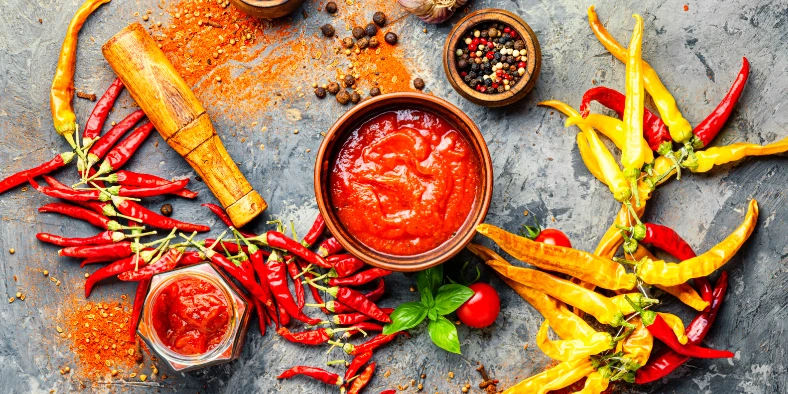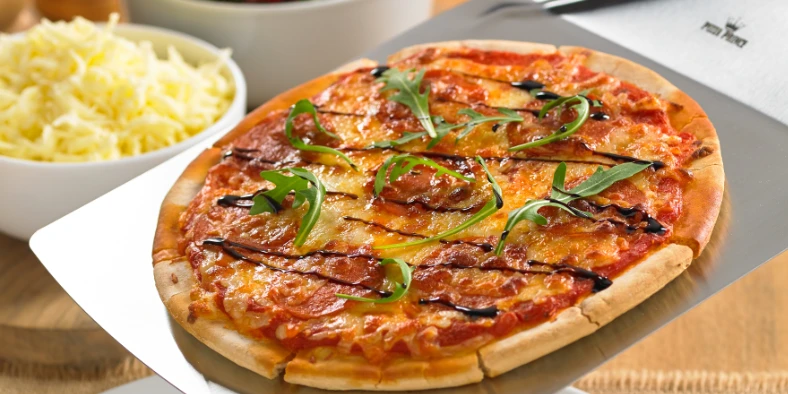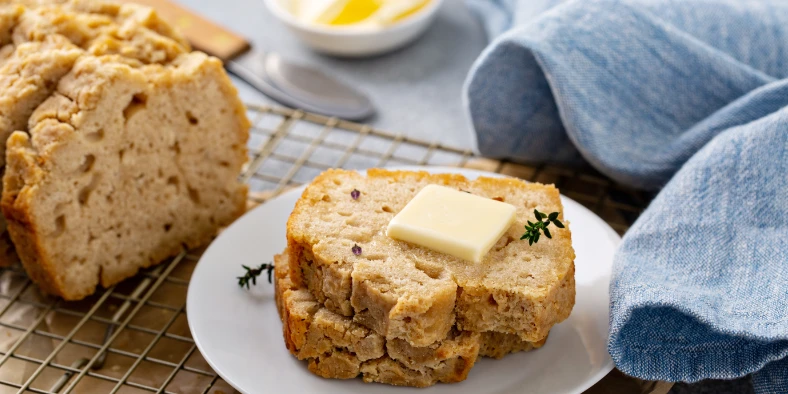Despite the cost of pasta increasing by almost 20% in recent months, it’s still a cost-effective meal solution that will continue to trend up in 2023. We’ll take a look at chefs who are getting creative and getting noticed.
From school dinners to restaurant meals, pasta is an ever-popular choice thanks to its great versatility. It brings comfort in times of need (like the cost of living crisis), and whether you cater for schools, care homes, restaurants or cafes, pasta will always be a winning dish, but we need to keep innovating!
For the past few years, we have seen a huge surge in more artisanal, custom-made pasta dishes such as black truffle pappardelle and seafood ravioli. Another growing trend is whole wheat and gluten-free pasta that offers flavour, texture, and health benefits. Plant-based proteins like chickpea pasta are becoming increasingly popular for those looking for a healthier alternative to traditional pasta. Here are the 6 trends we are seeing.
Trend 1: Pasta pop-ups and supper clubs are a great way to get noticed
Pop-ups have boomed since Covid, and they don’t seem to be slowing down. People love that they can pick up a quick, restaurant-quality meal on the go. A few pop-ups we’ve noticed doing it really well are Nonna’s Pasta, in Manchester, and The Cheese Wheel, in Camden Market. Jamie Oliver’s new pop-up called Pasta Dreams, in Soho, is also turning heads. Jamie’s keeping it simple with takeaway and delivery of delicious Italian pasta dishes, like Beef & Chianti Agnolotti and Vodka Arrabbiata Casarecce, and not forgetting his mash-up of two pasta giants: Cacio x Carbonara.
Trend 2: Set your pasta dishes apart with innovative flavours and cooking techniques

Chefs who aren’t afraid to break the mould are moving away from traditional Italian flavours. They’re going rustic, from their presentation to the cuts of meat and introducing innovative techniques and ingredients.
Slow-cooked beef ragu has always been popular, often made using cuts of meat like short rib, oxtail, brisket, cheeks and shin, simmered until they’re rich and deep in flavour. Some great examples are Fratelli Paradiso in Australia and Notto Pasta Bar in London.
Some chefs will be experienced in cooking with game, but if not, it’s time to get your ‘game on’, because it’s back on menus. Check out Quality Wines in London egg yolk pappardelle with rabbit ragu, and Bancone London duck ragu with crackling – mouth-watering stuff!
We know cheese is a key ingredient in most pasta dishes, and as always, ricotta, mascarpone, pecorino and parmesan are ever-popular choices, as well as a bit of gorgonzola. But a few other Italian classics are making their way into dishes, like stracciatella and smoked scamorza. Aemilia in Edinburgh does a wonderful tortellini filled with ricotta and scamorza, and Va Penne in Melbourne a broccoli and pea pasta with stracciatella, mint, garlic and chilli.
While classic seafood dishes such as Spaghetti alla Congolese and squid ink pasta still feature heavily on menus, other exciting ingredients of the sea are making their way onto the plate. From tuna, squid, prawns and anchovies to herring, smoked eel, and roe. Look to Pastaio London’s Sardine Spaghetti with pine nuts and sultanas for inspiration or Padella London’s Fettuccine with smoked eel and Amalfi lemon cream.
When it comes to using vegetables in pasta, courgette, broccoli and butternut squash are all safe ground and help to bring colour into what can be a very beige dish. But don’t let it stop there. Think roasted leeks, split peas, kale pesto and asparagus to brighten things up.
For more autumnal dishes, what about parsnip pasta, pumpkin and even creamy potato filling? Check out Luca Restaurant in London and their Cappelletti of potato and sage with porcini mushrooms.
If you’re into cooking with Japanese and Asian flavours, then try using miso to add a deep umami flavour to your dish – especially mushroom ones. Sea urchin (uni), smoked eel (unagi), and Lapsang tea are other more rare flavours also being used.
Trend 3: Comfort food and Al Forno is trending
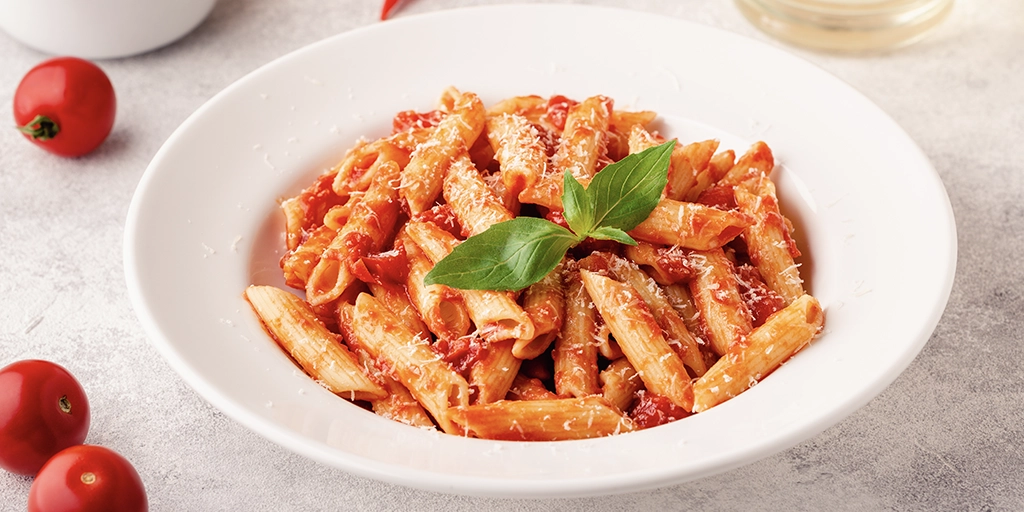
Knowing how comforting a warm bowl of pasta is, it’s no surprise that creamy, baked and slow-cooked recipes are high in popularity. Think beef ragu, carbonara, cheesy lasagne, creamy cannelloni, and fresh tomato and basil pasta bake. If you really want to grab your customer’s attention, use some of the techniques and flavours mentioned above to mix things up.
Trend 4: Pasta cooking hacks
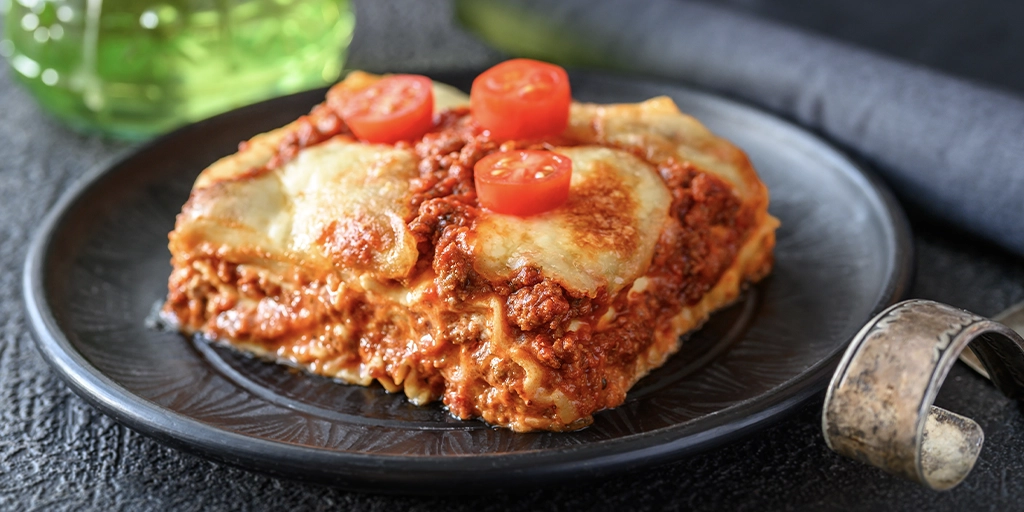
There are a lot of pasta cooking hacks on social media, but perhaps some of the best we’ve seen are that of the Beef Ravioli Lasagne, which uses beef ravioli instead of separate layers of lasagne sheets and bolognese.
Then there’s Mob Kitchen, who focuses on creating meals that taste amazing, for a range of budgets, like the Broccoli Pasta, with lemon and chilli, or the Vodka Gnocchi Bake. Hummus Pasta has also become popular, made by mixing hummus with a little pasta water and coating the pasta until you get a silky sauce. The options are endless, from original to red pepper or even beetroot hummus!
Trend 5: Experiment with different pasta shapes
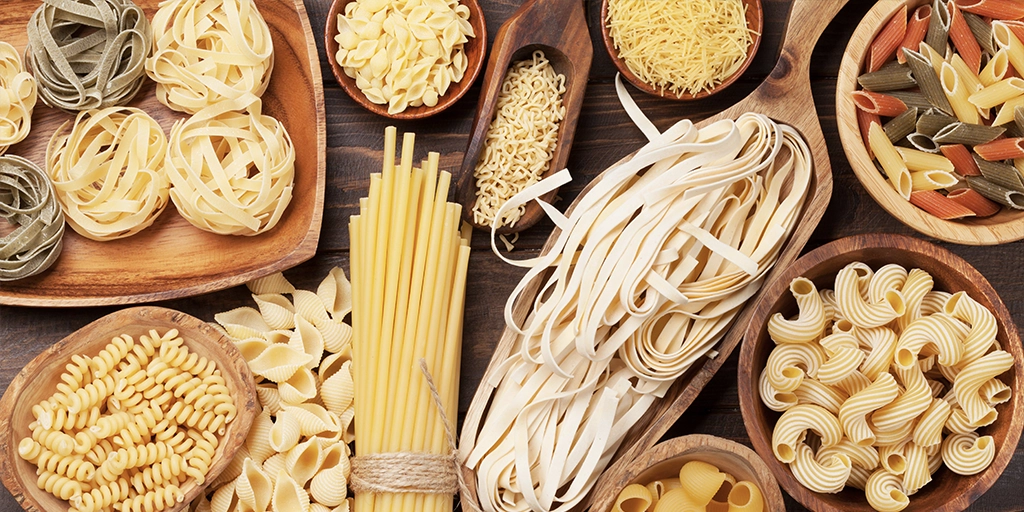
Chefs love to get creative, using various pasta shapes in their dishes. Spaghetti, Fusilli and Penne are the most common types, but Conchiglie, Mafaldine, Lumache, Cavatelli and Casarecce are becoming more prominent in restaurant-quality dishes too.
Mafaldine, the ribbon-shaped pasta (also known as reginette), is perfect for capturing smooth sauces with its rugged edges. Big Mamma in London’s truffle pasta went viral on Instagram a few years ago and is still incredibly popular – they shared the recipe just last month!
Lumache, which translates as ‘snails’ in Italian, is a curved hollow pasta and is booming in NYC. Look at North Italia, Bar Pasquale, and Rubirosa for inspiration.
Cavatelli (made from semolina) and Casarecce (made from short pasta noodles) are two very on-trend pasta shapes. Both are great at capturing sauces and are used brilliantly by Bocca di Lupo, in London to make their Pesto Genovese with green beans and potato, as well as Cavatelli Calabrese from Sugo Pasta Kitchen in Manchester.
Corzetti pasta is thick and round, typical of northwest Italy. Social media is loving this shape, as chefs in various colourful designs are making it. When in Rome and Officina 00 are using it to really stir up some excitement with guests.
If you enjoy making ravioli, then maybe it’s time to start experimenting with different-shaped parcels. Triangoli and Luna Ravioli have both become very popular – and again, social media loves them. Pasta Evangelist’s double-barrelled ravioli with spinach, ricotta and pistachio is always a hit. And Pasta Social Club in D.C have even made theirs into moon and star shapes.
You may also have seen the Uovo pasta; it’s more of a complete pasta dish than a ‘shape’. The large ravioli shape oozes with egg yolk once cut into, self-saucing the dish. Many pasta establishments have become popular with this signature dish, and it often goes viral on social media.
Fairway Assured has seven different types of pasta, including Conchiglie, Farfalle, Fusilli, Fusilli Tricolore, Macaroni, Penne, and Spaghetti.
Trend 6: Offer customers gluten-free and vegan alternatives to wheat pasta
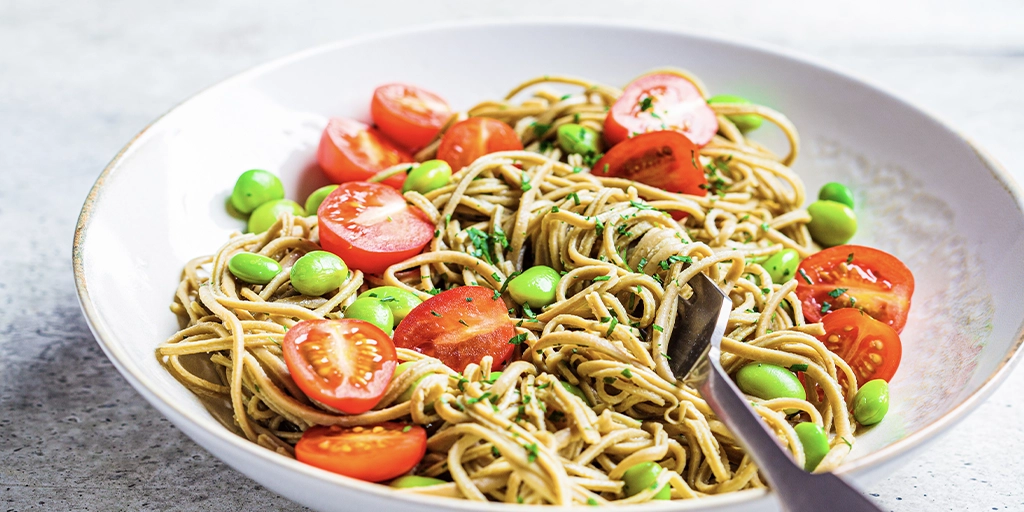
Over the years, a range of pasta made from alternative ingredients to wheat has hit the market, allowing those with gluten intolerances to enjoy their favourite pasta dishes again. Most gluten-free pastas are now made from grain alternatives like buckwheat and rye, and now even pulses like chickpeas, broad beans, edamame and lentils. These latter options also offer additional health benefits like increased protein too. Vegetables like pumpkin, sweet potato, spinach and kale are also being used. You may have seen complete vegetable alternatives to pasta, like spaghetti squash and hearts of palm.
The real challenge with creating plant-based pasta dishes though comes down to the ingredients, finding cheese and butter alternatives that can make a sauce as indulgent as its original.
For such a basic ingredient, pasta can truly shine in so many ways. Our love for pasta across the world will never die, in fact, it will only grow as chefs come up with new techniques and flavour combinations to keep us going back for more.
Source: The Food People




